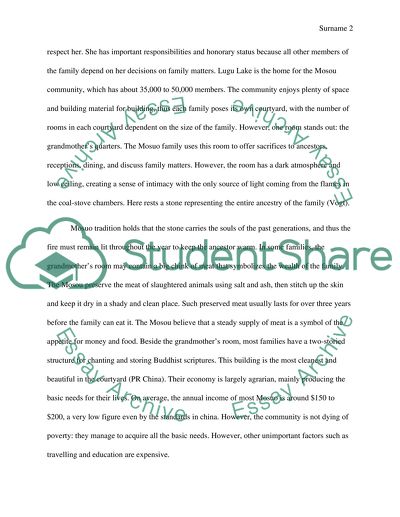Cite this document
(“The Women's Kingdom - Mosuo Essay Example | Topics and Well Written Essays - 1750 words - 1”, n.d.)
The Women's Kingdom - Mosuo Essay Example | Topics and Well Written Essays - 1750 words - 1. Retrieved from https://studentshare.org/journalism-communication/1597249-the-womens-kingdom-mosuo
The Women's Kingdom - Mosuo Essay Example | Topics and Well Written Essays - 1750 words - 1. Retrieved from https://studentshare.org/journalism-communication/1597249-the-womens-kingdom-mosuo
(The Women'S Kingdom - Mosuo Essay Example | Topics and Well Written Essays - 1750 Words - 1)
The Women'S Kingdom - Mosuo Essay Example | Topics and Well Written Essays - 1750 Words - 1. https://studentshare.org/journalism-communication/1597249-the-womens-kingdom-mosuo.
The Women'S Kingdom - Mosuo Essay Example | Topics and Well Written Essays - 1750 Words - 1. https://studentshare.org/journalism-communication/1597249-the-womens-kingdom-mosuo.
“The Women'S Kingdom - Mosuo Essay Example | Topics and Well Written Essays - 1750 Words - 1”, n.d. https://studentshare.org/journalism-communication/1597249-the-womens-kingdom-mosuo.


